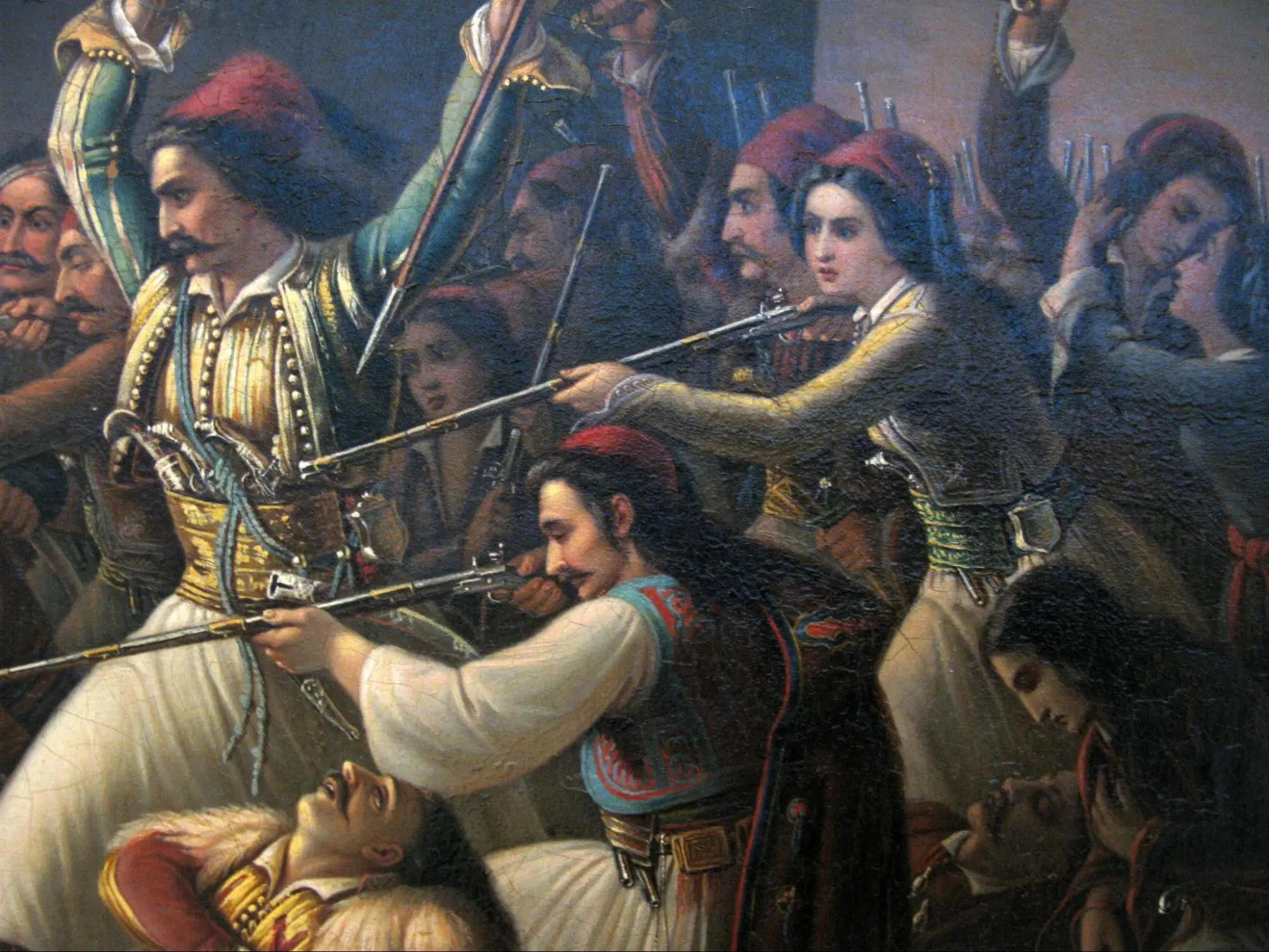
You may not recognize the name of painter Theodoros Vryzakis, but his impact on Greece and the construction of the national ethos was very profound. His paintings depicting the Greek Revolution were highly acclaimed upon their debut in the mid-19th century, and they continue to shape the Diaspora’s appreciation of the Revolution in the modern day.
Vryzakis was an orphan whose father was hanged by the Turks at the beginning of the war effort. Because of this, he grew up in a remote orphanage, where he was eventually extradited to Munich, Germany. His raw talent was noticed by many of his peers, and he was admitted to the Athens School of Fine Art. While there, he became internationally recognized and celebrated by his contemporaries.
Today, we Greeks continue to draw inspiration from his artwork, which stands as one of the most powerful depictions of the Revolution. While many Western nations acknowledged the righteous struggle for independence, our centuries of suffering under Ottoman rule often portrayed Greeks as vulnerable and defenseless. Vryzakis’ enduring legacy lies in his masterful use of art to immortalize the great victories and heroes of the Greek War for Independence.
The Camp of General Karaiskakis (1855)
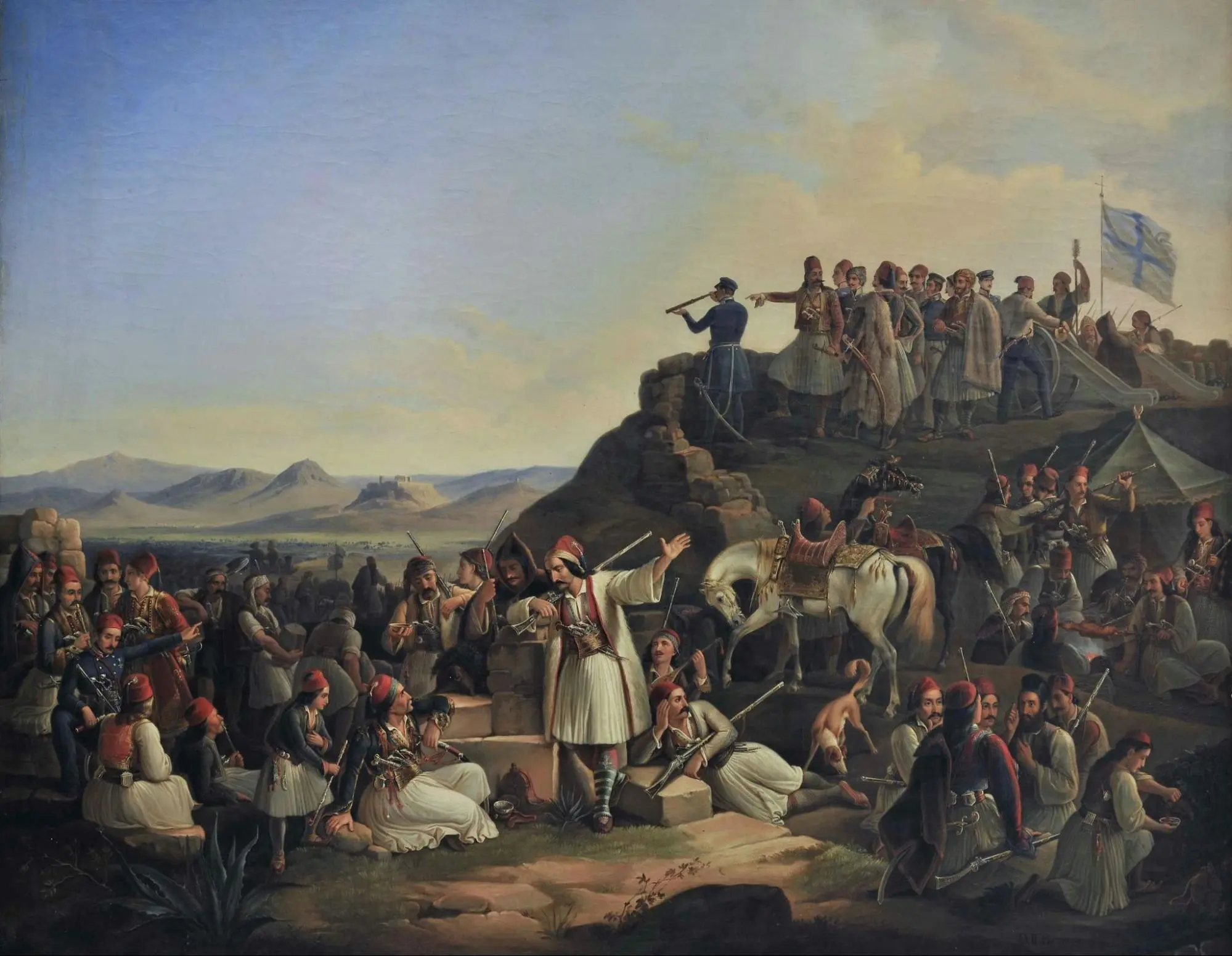
This painting depicts the preparation for an upcoming battle, led by General Karaiskakis. The ensuing battles resulted in the lifting of the siege of the Acropolis.
The Consolation (1856)
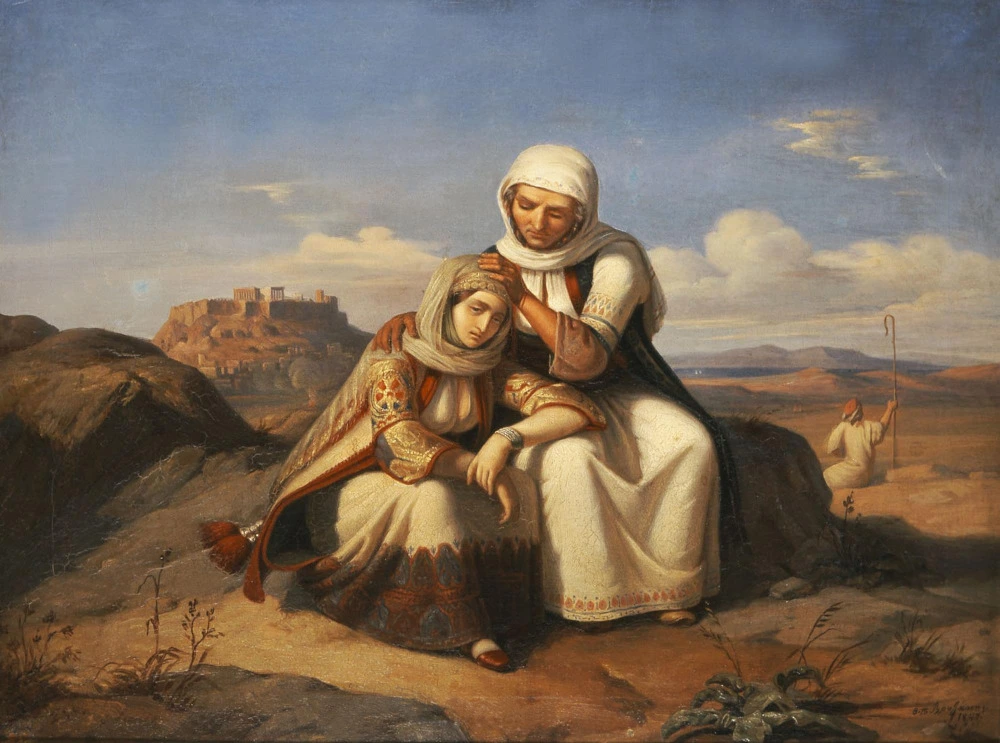
This painting was intended to represent the loss of a loved one in the campaign to liberate Greece. Here, a mother and daughter lament the fall of their father in the national uprising.
Greece Expressing Gratitude (1858)
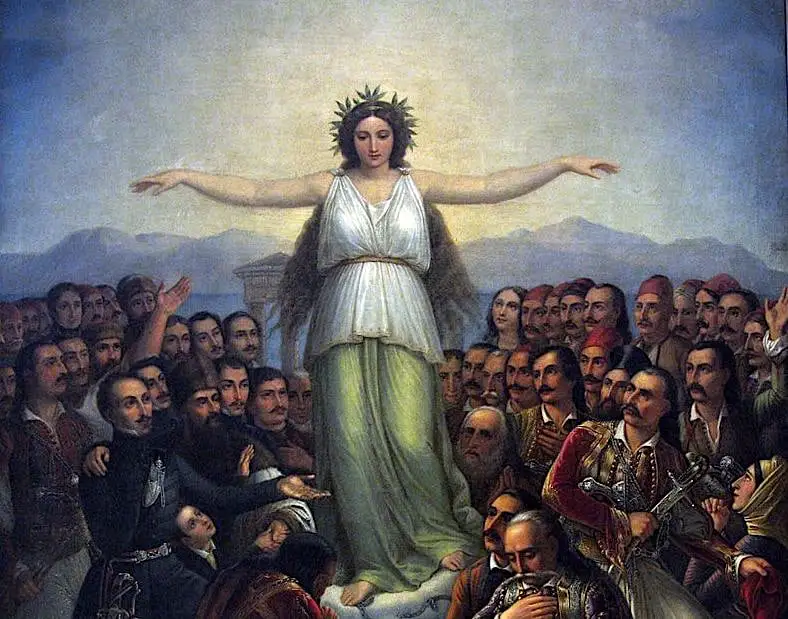
The Greek soldiers bow before the almost heavenly woman with respect and admiration. Many of the people depicted in the painting are real leaders of the Revolution, including Kolokotronis, Ypsilantis, and Papaflessas.
The Reception of Lord Byron at Missolonghi (1861)
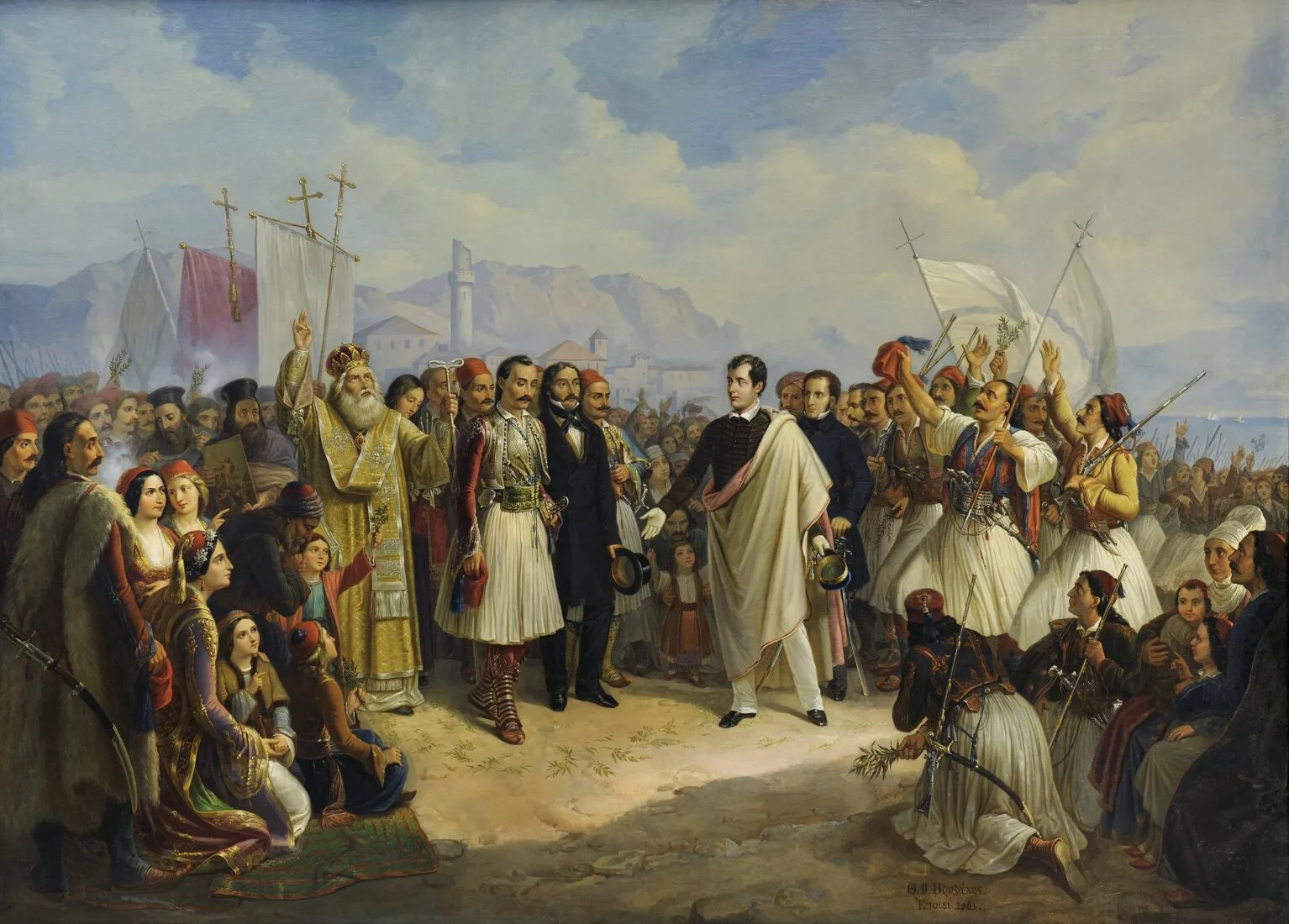
The above painting depicts Lord Byron, a famous Philhellene, arriving in Greece to support the Revolution. His assistance culminated in the British intervention and support of the Greek struggle for independence. Today, this work remains a symbol of inspiration for Philhellenes worldwide.
The Exodus From Missolonghi (1853)
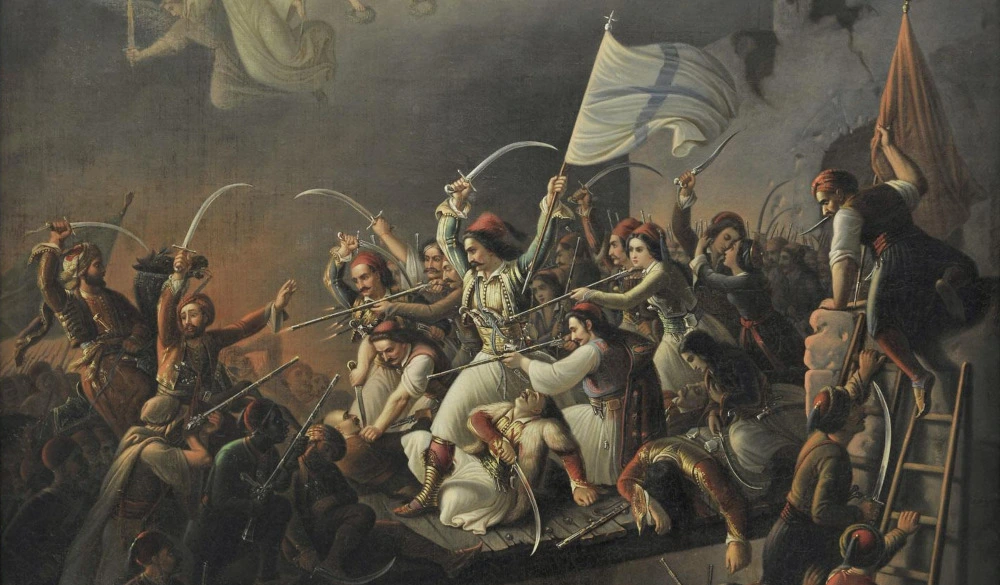
Here, Vryzakis captures the emergence of Greek fighters from the walls of the city, engaging Turkish soldiers in battle. The flag of the Revolution is prominently displayed.
The Bishop of Old Patras Germanos Blesses the Flag of the Revolution (1865)
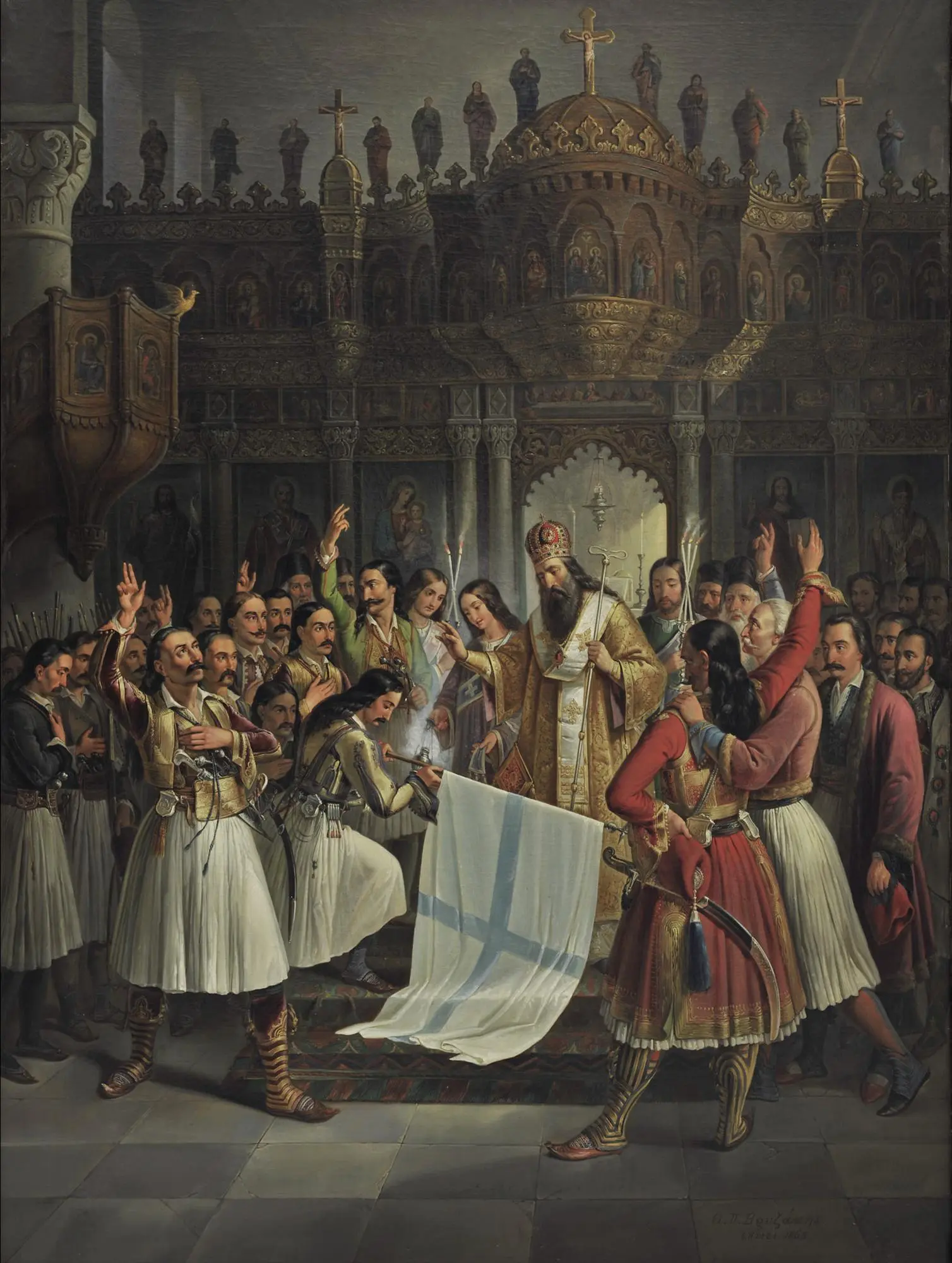
On March 25, 1821, Bishop Germanos announced the national uprising against the Ottoman Empire and blessed the flag of the revolution during the Feast of Annunciation.
Suffice it to say, Vryzakis’ paintings have left an indelible mark on modern Greek history. Although he became an orphan as a result of the war effort, his depictions of the national struggle for independence remain an inspiration for his contemporaries and continue to draw admiration from Greeks worldwide.